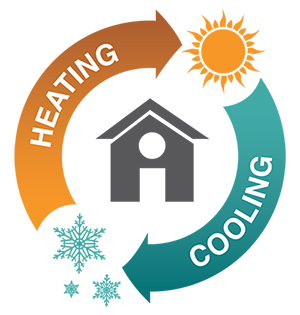Burkholder’s Whole Home Evaluation Can Help You Save Money On Energy Costs This Year

One way to save is the make sure that your home is properly insulated to keep the cool air inside and the hot air outside, where it belongs. The U.S. Departments of Energy and Environmental Protection estimate that drafty windows, doors and ductwork can cost the average homeowner about $350 per year in wasted heating and cooling expenses.
According to www.energystar.gov, up to 20 or 30 percent of that air that moves through homes with forced-air heating and cooling systems is lost due to leaks, holes and poor connections. That means higher utility bills because it takes more energy to keep your home comfortable in extreme weather conditions.
Signs that your ductwork and other potential leak sources are causing problems include high energy bills, rooms that are difficult to heat and cool and stuffy rooms that never seem comfortable despite the thermostat setting. Most ductwork is concealed in walls, ceilings, attics and basements, making them difficult to repair so it is often best to hire a professional contractor or firm to make the repairs.
But there are some things homeowners and residents can do, such as using mastic sealant or metal tape and insulating all the ducts that you can access. The DOE advises against using duct tape because it is not long-lasting. Also, make sure that the connections at vents and registers are well-sealed where they meet the floors, walls, and ceiling because they are also common locations to find leaks and disconnected ductwork.
When it comes to windows and doors, caulking and weather-stripping are often the best solutions. Caulk is generally used for cracks and openings between stationary house components such as around door and window frames, and weather-stripping is used to seal components that move, such as doors and operable windows, according to energystar.gov.
Other potential leak sources include the attic hatch; between the chimney and drywall; chimney flues; electrical and gas service entrances; cable TV and phone line service entrances; window air conditioning units; where dryer vents pass through walls; cracks in bricks, siding, stucco and the foundation; and mudrooms or breezeways adjacent to garages.
In addition to lower energy costs, these often easy steps bring benefits such a reduced noise from outside; less pollen, dust and insects or other pests entering your home; and better humidity control.
But the best way to ensure that your home remains comfortable and your energy costs low is to take our convenient survey and contact Burkholder’s to arrange a Home and Duct Performance test today.
